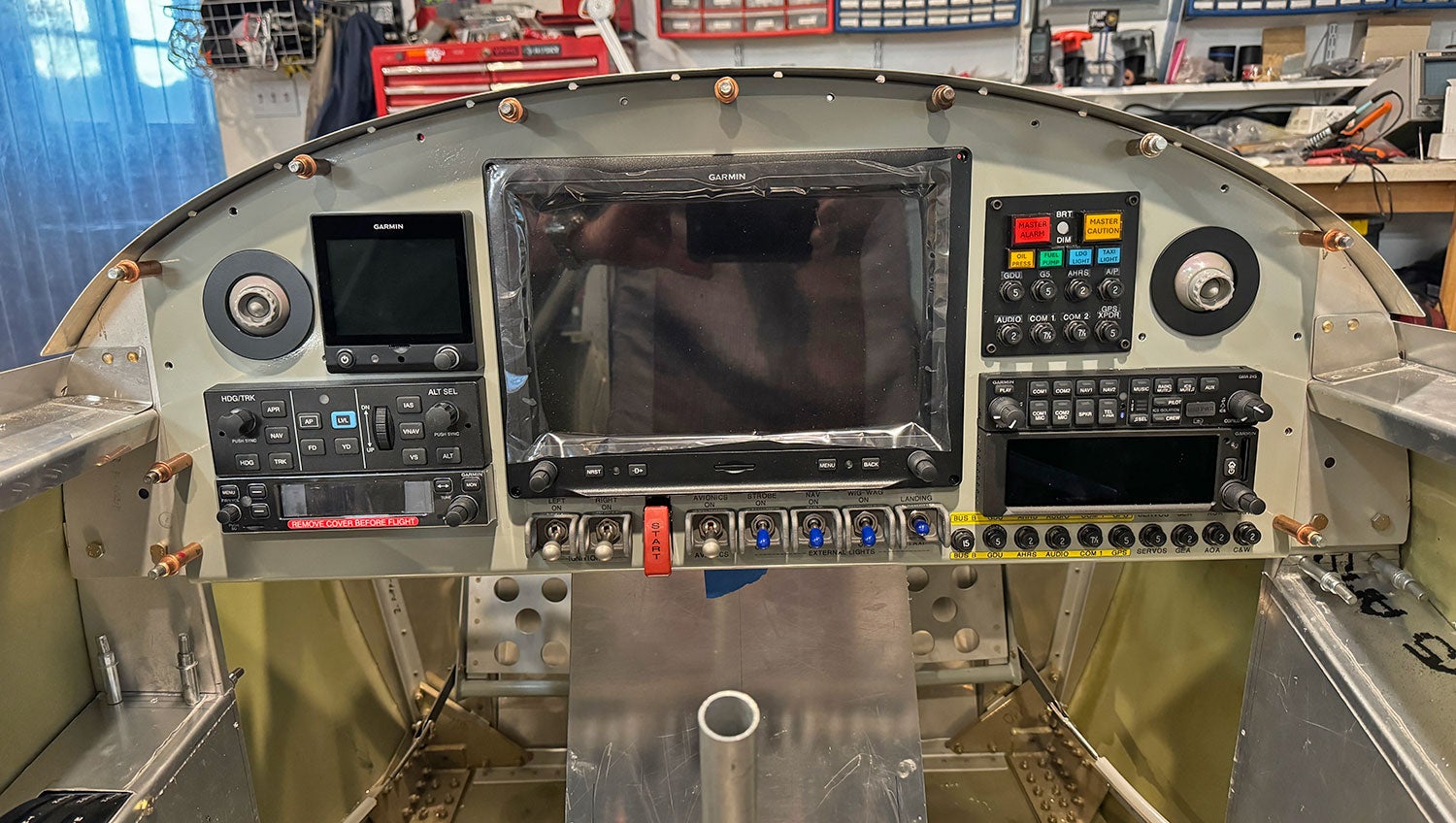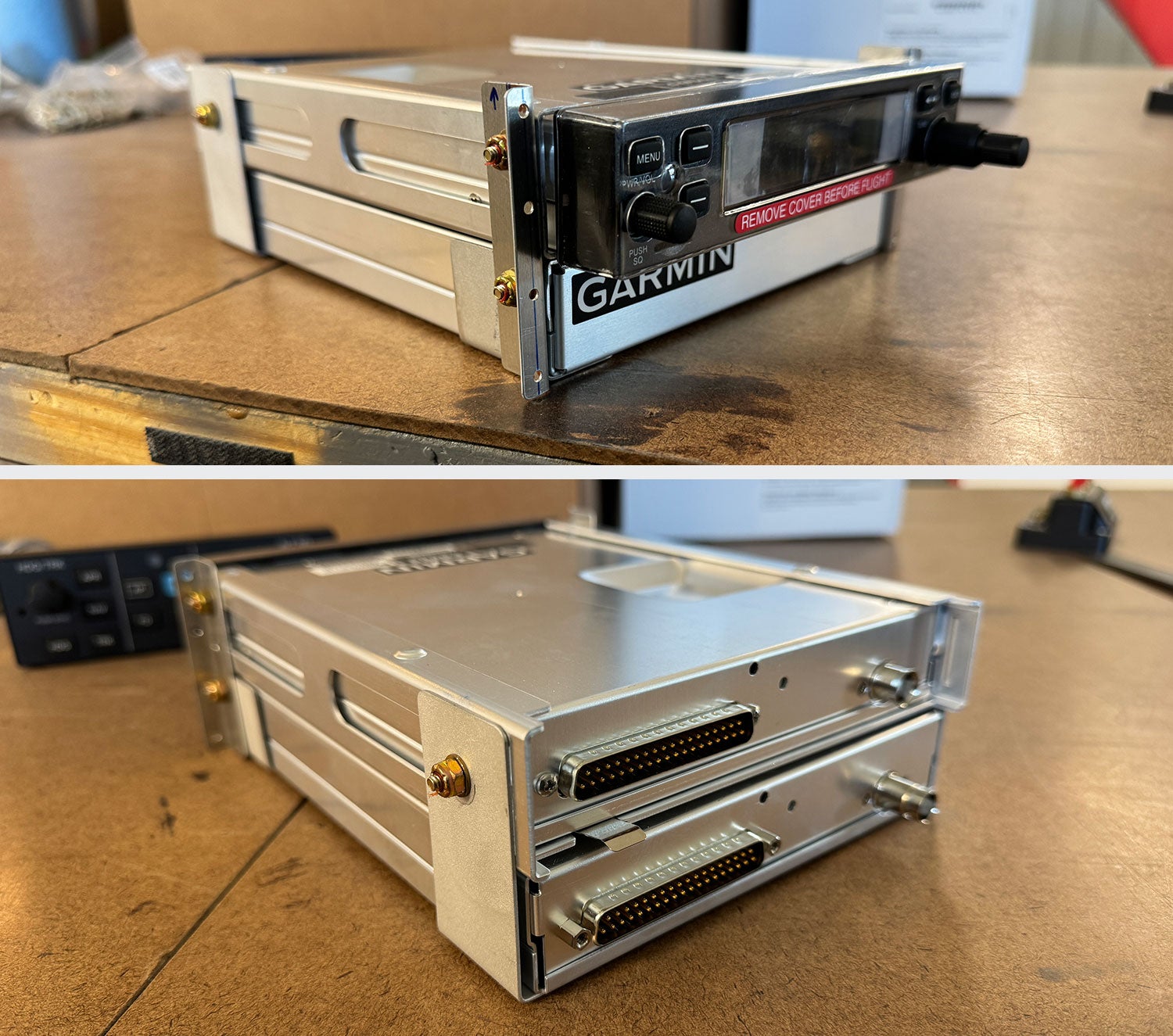 Someone asked me (after seeing the panel photo of our nascent Rocket front office) why there are circuit breakers underneath the IFR Nav/Transponder on the right, but not underneath the comm radio on the left. As much as I like panel symmetry, I made this decision because I needed a place to “hide” the number 2 comm radio, with is a remote-only Garmin box—and it is slung underneath the panel-mounted comm 1 radio making that spot unavailable for breakers.
Someone asked me (after seeing the panel photo of our nascent Rocket front office) why there are circuit breakers underneath the IFR Nav/Transponder on the right, but not underneath the comm radio on the left. As much as I like panel symmetry, I made this decision because I needed a place to “hide” the number 2 comm radio, with is a remote-only Garmin box—and it is slung underneath the panel-mounted comm 1 radio making that spot unavailable for breakers.
Mounting the radio box in that location will make the wiring much cleaner, and it means I don’t need to find another location (in the narrow tandem Rocket fuselage) for the somewhat awkward-shaped box. With this configuration, all the comm-related wires go to and from the same general area of the panel.
Mounting it required removing the supplied forward and aft mounting brackets and using the tapped screw holes for a couple of small angles I fabricated out of aluminum scraps for the front, and a “U”-shaped bracket for the back. The angles mounted to the front of the comm stack with #6 screws and fiber lock nuts are the angles that get riveted to the back of the instrument panel itself.
If you’re looking for a place to remote-mount a comm without having to run wires under the floor or to the baggage area, this might be a useful solution for you.













